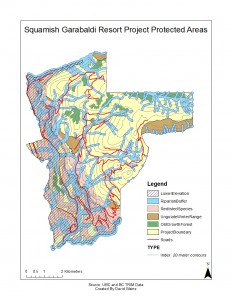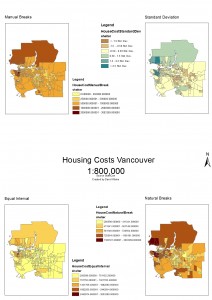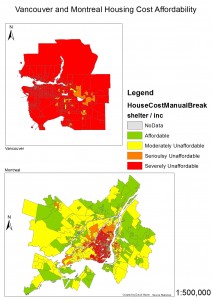Waste Water Governance
The topic being discussed in this assignment is the dumping of untreated sewage into the ocean off the coast of the Greater Victoria region in British Columbia, Canada. Currently municipal wastewater undergoes solely primary sewage treatment, screens that remove solids 6 mm or larger in size before being discharged offshore without any other treatment. Currently those who have the power to make decisions regarding wastewater treatment in the region are municipal governments. The municipalities that make up the Capital Region and the residents who vote them to power are those who can determine the future of wastewater treatment in the region.
When we look at the state of regulations regarding water in general and waste water treatment specifically there are many different layers of regulation and responsibility. Firstly on an international/global level there are no current binding treaties or resolutions of which Canada is a party to. The sole international agreements are between Canada and the U.S.A. and relate to international waters and rivers that flow into the United States. The International Rivers Improvement Act and the International Boundary Waters Treaty Act. Neither of these acts deal directly with waste water discharge. (Government of Canada, n.d.) (Government of Canada, n.d.)
On a federal level there is also very little government regulation. The only law regarding water quality is the Canada Water Act (Government of Canada, n.d.), this act is solely a binding agreement between Canadian Provinces and the federal government. Water is considered “owned” by provinces and is regulated by provinces directly. The federal government may make recommendations on water standards and quality but it is up to the provincial governments to act upon these recommendations at their discretion.
The bulk of regulation around waters in Canada is determined by provincial governments. In British Columbia waste water is regulated through The Municipal Wastewater Regulation. (Government of British Columbia, n.d.) This document sets out the general guidelines that all municipalities must follow in regards to the treatment and discharge of municipal waste water. The large majority of regulations deal with the discharge of effluent in ground areas. In our case study we are looking at effluent discharge into a marine environment, or water discharge. The regulations in this instance are quite different. The requirements for discharge depend on many factors. To mention a few, volume of discharge, type of discharge, length of discharge pipe, fecal coliform levels, location of discharge pipe, and the dilution zone, among many others. All these various factors must be taken into account by a municipality when discharging effluent into a marine environment. However within these boundaries the municipality (municipalities) have leeway in methods of discharge and treatment. Future acts and regulations may change the landscape of water treatment in British Columbia such as the Water Sustainability Act which comes into effect in early 2016. (Goverment of British Columbia, n.d.)
The municipalities in question have the final authority to make decisions regarding waste water discharge within the boundaries of provincial regulations. At the moment the problem seems to be that there is no consensus on whether or not Victoria’s treatment system (or lack thereof) false within regulations or not. As mentioned in previous assignments there are many who believe that current treatment methods are adequate, ie wastewater is sufficiently diluted etc. Others believe this to not be the case and that secondary and potentially tertiary treatment methods need to be implemented.
In regards to cultural conventions the norm has been to discharge the waste directly to the marine environment as has been happening for the past century. This action however has led to conflict and ill will with neighbouring Washington State. This is due to the fact that the state shares waters of the San Juan Islands which are quite near geographically to Victoria and its sewage outflow pipes. There have been arguments made (as explored in previous posts) that effluent may be contaminating waters in Washington State. This conflict has led to international pressure on Victoria to change its waste water treatment plan.
When looking at governmental policies in regards to wastewater management we can see two distinct levels of regulation. Provincial and Municipal. The regulations are available online in their entirety (as cited in this assignment) and are quite accessible. However the language present can be difficult to understand to the lay person. This can limit the accessibility of the information and its understanding. In regards to the case of Victoria the issue of governance are quite murky. As mentioned earlier there is much debate around the state of treatment and whether or not it falls within provincial regulations. Since this confusion and debate exists it is difficult to determine accountability and participation to a concrete extent in regards to Victoria’s waste water treatment standards. I believe that there is a lack of good governance in regards to this case. This is due to a large amount of confusion and lack of clear regulations.
When looking at the sum of regulations and governance in regards to Canadas waste water standards on all levels, federal, provincial, and municipal, there seems to be a lack of governance framework. There is very little federal oversight and standards on a federal level are lacking. This places the large amount of power in provincial hands, with different provinces having different policies. When dealing with water which is a fluid system, water flows across national, provincial, and municipal boundaries, a higher level of governance seems necessary. A clarification and standardization of practices and regulations at a federal level, in consultation with other neighbouring nations (United States in particular) would go a long way in clarifying the subject of waste water management. By creating a clear regulatory environment the wicked problem of Victoria’s waste water could be simplified and potentially solved.
Bibliography
Goverment of British Columbia. (n.d.). Water Sustainability Act. Retrieved from Goverment of Bristish Columbia: http://engage.gov.bc.ca/watersustainabilityact/
Government of British Columbia. (n.d.). Municipal Wastewater Regulation. Retrieved from British Columbia: http://www2.gov.bc.ca/gov/content/environment/waste-management/sewage/municipal-wastewater-regulation
Government of Canada. (n.d.). Canada Water Act. Retrieved from Justice Laws: http://laws-lois.justice.gc.ca/eng/acts/C-11/index.html
Government of Canada. (n.d.). International Boundary Waters Treaty Act. Retrieved from Justice Laws: http://laws-lois.justice.gc.ca/eng/acts/I-17/index.html
Government of Canada. (n.d.). International River Improvements Act. Retrieved from Justice Laws: http://laws.justice.gc.ca/eng/acts/I-20/index.html


